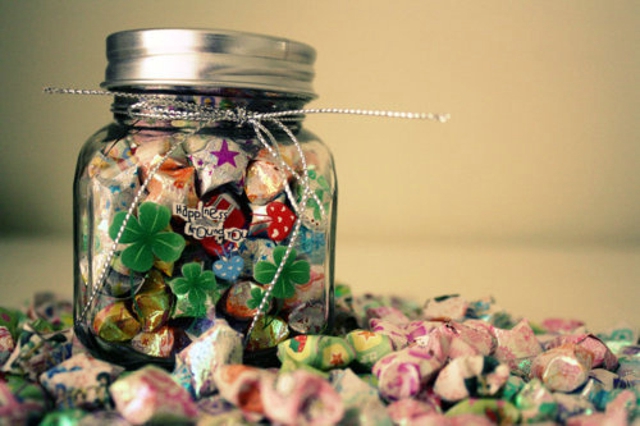
自制草莓酱的过程英文作文
Lovely homemade strawberry jamThis recipe is simple。
There are just a couple of things I should mention before you get started though. One is that it's only worth making with really fresh, fragrant berries that aren't battered and bruised. And the other thing is, short of adding a setting agent (like powdered pectin), which I don't like doing as you can always taste it, this jam won't set firmly. If the berries are really fresh then you'll get a pretty good gel, however more often than not, it's considerably more runny than its commercial cousins (but much more delicious too). Keeping it in the fridge will help thicken it a bit. I've made this recipe for a kilo of berries, but you can just use 500g if you like...it will give you a couple of jars. In fact, jams and marmalades in general are much better, clearer and more vibrant when they're made in small batches as you don't risk overcooking the fruit and losing its 'fresh' flavour. I think that's the comment I most often hear, in fact, when people taste this - they can't believe how 'strawberry-ish' it is.PrintEmailPermalinkShare701Serves:4 medium jarsDegree of difficulty:LowIngredients1kg fresh, fragrant strawberries, hulled and halved if large1kg white sugarJuice of 2 large lemons, strainedMethodPut the strawberries and sugar into a very deep, wide, heavy-based stainless steel or enamel saucepan. Give the pan a shake so the sugar settles down into the berries. (If you don't have a really big pan, you're best to make a smaller quantity of jam, as it rises up when it boils and can spill over the sides of a small pan. It's an awful, messy thing to clean up too.) Drizzle the lemon juice over the top, cover the pan, and leave it to sit for an hour or 2.After this, place the pan over medium\\\/low heat and warm the mixture, stirring gently until the sugar has dissolved. Now, clip a sugar thermometer to the side of the pan. (This isn't essential so don't worry if you don't have one.) Increase the heat to very high and let the jam boil rapidly, stirring it occasionally to make sure it isn't catching on the bottom, for between 15 and 20 minutes until it has reached setting point.When the jam is close to setting point it bubbles up rather alarmingly in the pan, so you need to keep an eye on it and adjust the temperature a bit so it doesn't boil over.Your jam will have reached setting point when the temperature has reached 105 degrees Celsius, or when you dip a wooden spoon into the jam and the last few drops look quite thick and syrupy. You can also spoon a little jam on an ice-cold saucer and put it in the freezer for a minute or so, then push your finger through it. If the surface wrinkles up a little, it's ready. Keep testing the jam every minute of so, and as soon as it's ready, take it off the heat and let it settle for a few minutes. Ladle it into hot, sterilised glass jars, cover them with a sheet of baking paper to protect them, and leave them to cool completely.When they're ready, remove the paper and seal the jars tightly. Label and date them, and store them in the fridge for up to 4 months.Sterilising jarsIt's important to remember that the jars must be hot when you fill them with the hot jam, otherwise they may crack, so you need to get your timing somewhat in sync with the jam when you sterilise them. There are a few ways to do this, but the two I mainly use are these.Wash the jars in warm soapy water, rinse them thoroughly then sit them and their lids (as long as the lids aren't plastic or won't melt) on an oven tray. Put the tray with the jars into a cold oven then turn the heat to 130. Leave the jars for 30 minutes, then carefully take them out and cover them with a sheet of greaseproof paper until you're ready to use them. (Or you can just switch off the oven and leave them in to stay hot if the jam isn't quite ready.)The other way, if you have a dishwasher, is to put the jars and their lids through the hottest cycle, and leave them in once the cycle has finished, so they stay hot until you fill them.
自制草莓酱可以存放多久
哇,好不错哦,好羡慕你的人缘哦
我也好想吃,祝你天天都有好心情哦
自制草莓酱就霉了一个小点,还能吃吗
有霉菌斑点就不能吃了,已经开始发霉变质,对身体有害。
发霉食物的危害: 1、熟食制品易霉变:面包糕点或吃剩的饭菜等 还有各种水果、蔬菜在贮藏、运输过程中,由于管理不妥当,常会出现成筐成批地发霉变质。
2、粮、油易霉变:这对人的健康危害最大,各种粮食、尤其是玉米、小麦 、稻谷、花生等,是许多产毒霉菌赖以寄生的最好场所,无论是在田间成熟过程中,或是在粮仓贮藏过程中,最容易遭到霉菌的侵袭,成为毒品,如果油料作物,如花生、油菜籽等,榨出油后,油中也会带有霉毒。
3、腌制品易霉变:咸菜、酱菜、咸肉、火腿等,在腌制过程中都极易霉变而带毒素,如在我国河南林县食管癌高发区,就是居民都喜欢吃自己腌制的酸菜,经过调查,这种酸菜被霉菌污染非常严重,经鉴定发现,主要污染霉菌是白地霉,这种霉菌会诱发胃癌。
五、预防食物霉变措施。
自制草莓酱的介绍
草莓酱放到可以密封的玻璃瓶中,然后将密封好的酱放到锅里,沸水煮15分钟,没有漏气的瓶应该能保存半年,但要避光



